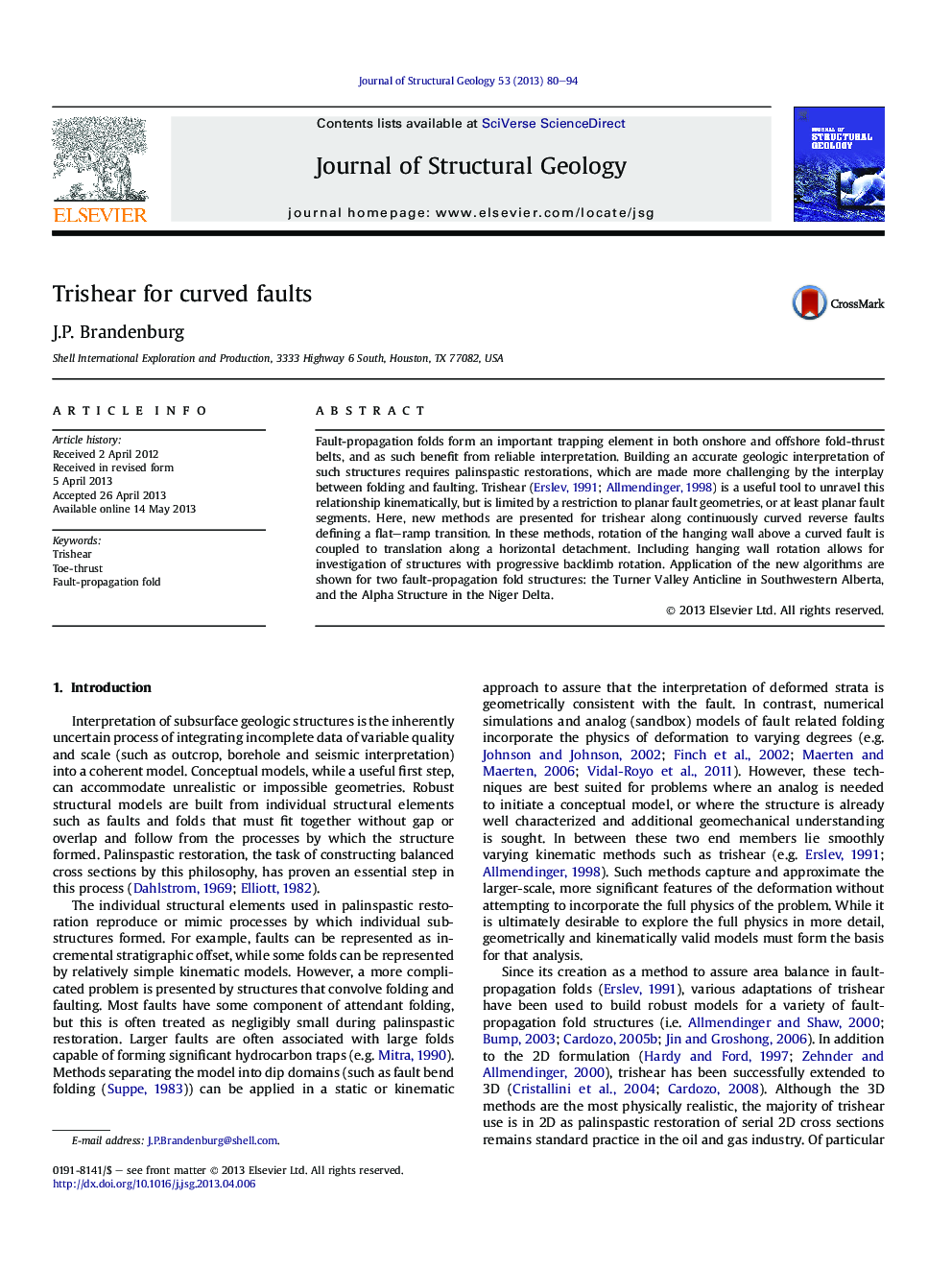| Article ID | Journal | Published Year | Pages | File Type |
|---|---|---|---|---|
| 6445107 | Journal of Structural Geology | 2013 | 15 Pages |
Abstract
Fault-propagation folds form an important trapping element in both onshore and offshore fold-thrust belts, and as such benefit from reliable interpretation. Building an accurate geologic interpretation of such structures requires palinspastic restorations, which are made more challenging by the interplay between folding and faulting. Trishear (Erslev, 1991; Allmendinger, 1998) is a useful tool to unravel this relationship kinematically, but is limited by a restriction to planar fault geometries, or at least planar fault segments. Here, new methods are presented for trishear along continuously curved reverse faults defining a flat-ramp transition. In these methods, rotation of the hanging wall above a curved fault is coupled to translation along a horizontal detachment. Including hanging wall rotation allows for investigation of structures with progressive backlimb rotation. Application of the new algorithms are shown for two fault-propagation fold structures: the Turner Valley Anticline in Southwestern Alberta, and the Alpha Structure in the Niger Delta.
Keywords
Related Topics
Physical Sciences and Engineering
Earth and Planetary Sciences
Geology
Authors
J.P. Brandenburg,
